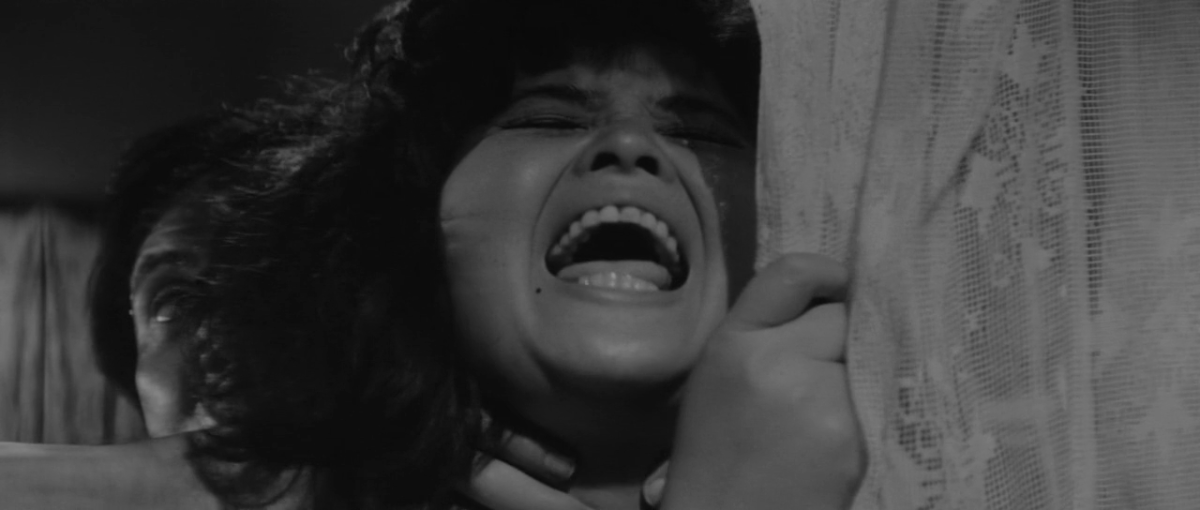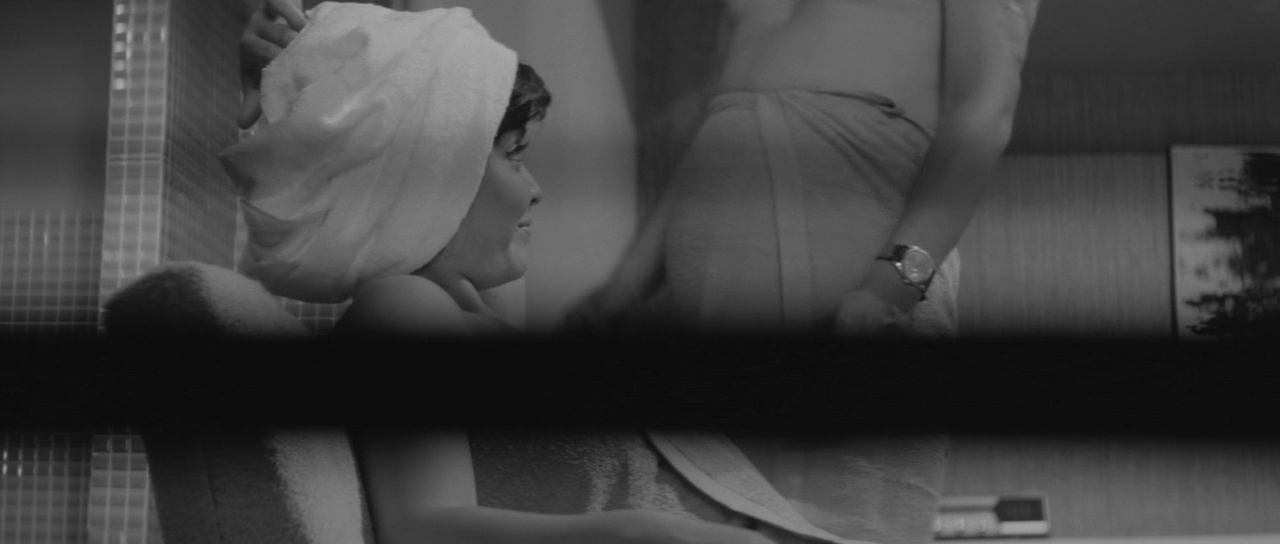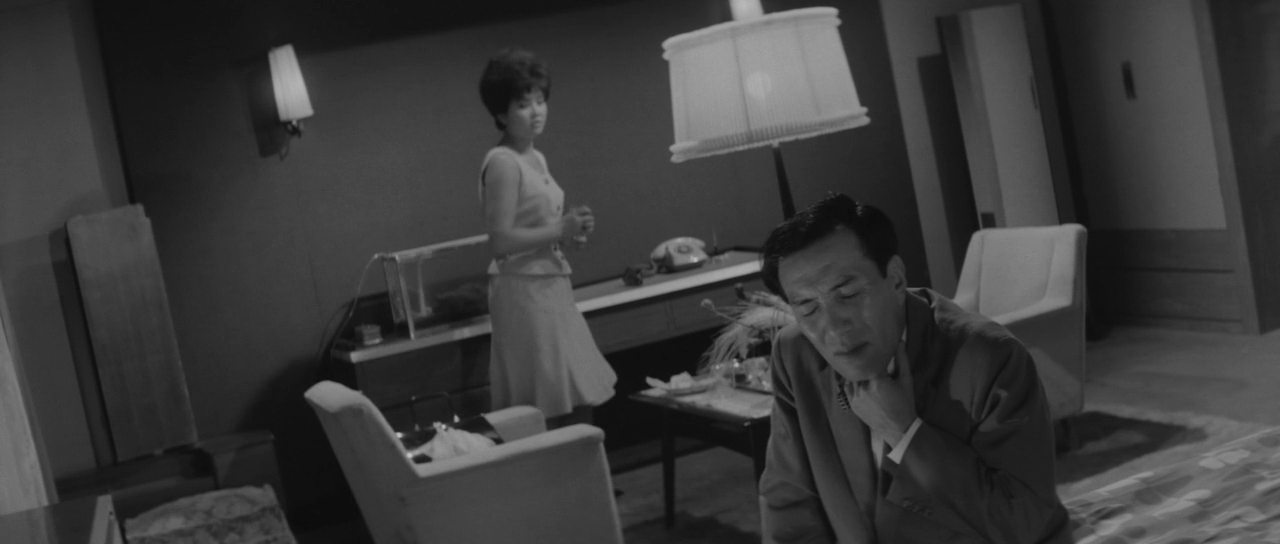Last Updated on September 29, 2020 by rob
A husband named Asami (Ko Nishimura) fed up with his wife Sugie’s (Masumi Harukawa) cheating ways strangles her after an argument. Taking her body in a hearse he then visits her lovers; the president of a large company named Kitamura (Meicho Soganoya) and a physician at Tokyo hospital Dr.Yamagoshi (Nobuo Kaneko) and threatens to expose their affairs and humiliate them publicly unless they pay up. But when Kitamura coughs up a whopping five million yen other parties get interested.
An invigoratingly plotted black comedy thriller with playful performances pitched at just the right level by the small cast. Nishimura, a familiar and versatile character actor in genre movies throughout the 60’s and 70’s can play a henpecked submissive or a murderous villain with equal conviction but he gets to showcase both extremes here and he’s really fun to watch. Harukawa is also good as his wife. She’s greedy and increasingly untrustworthy in her desire to escape but she retains our sympathy because she never seems evil and one understands her desire to escape the dull Asami and live life to the full. I also really liked Tora-san star Kiyoshi Atsumi’s performance as the hearse driver who delivers Asami and the corpse of his wife to her various lovers.
Atsumi gives such a quietly watchful performance that even though you don’t know it you feel instinctively that he’s going to figure in the story in some big way and so it proves come the final act. What anchors the film though, even over and above its unpredictable plotting, is the continually shifting nature of the relationship between Asami and wife Sugie. 10 minutes into this and it looks as though Asami’s done his wife in. Following a trip to blackmail the two lovers with his wife’s body in a coffin Asami’s alone with her corpse in his flat and guess what happens next? Correct, up she pops from her coffin with a big smile! She’s not really dead and this is a scam she and Asami are playing on her lovers because the promise of big money outweighs even her husband’s rage at her infidelities.
Asami thinks the money will keep them together but Sugie has other ideas and when Asami trails his wife to a secret hotel meeting with her lover (a nifty bit of suspense building here as Asami watches from behind a floor level ventilator grille unable to see the other man’s face) what looks all set to be a drama of betrayal and revenge has the completely unexpected result of pulling husband and wife back into each others arms. But for how long? That’s the big question once the money arrives (in one of the film’s funniest sequences poor Kitamura, believing Sugie to be a ghost, drops dead from shock on encountering her outside their flat) and double crosses turn into triple crosses. Eventually things come full circle and what we saw at the start of the movie is reenacted, this time with very different results. Has Asami finally gained the upper hand?
Well, maybe not. Off for a ride in the hearse to bury Sugie (this time for real) Asami suddenly finds himself blackmailed by none other than his own hearse driver (Kiyoshi Atsumi is so good he practically steals every scene he’s in) using a rationale that in its own bonkers way actually makes perfect sense. The Glamorous Ghost keeps surprising right up until the final scene in which a couple of passing motorists deliver a suitably cheery comic epitaph for the unfortunate Asami. Besides the pleasure of the performances and script the film has other attractions including Masasad Shinota’s moody, noir-ish lighting, Nishimura singing a little ditty entitled “Hearse On A Stroll” and Hajime Sato’s direction.
Sato uses a fair number of freeze frames to effectively convey the torrid nature of Sugie’s extra-marital affairs, he throws in imaginatively skewed camera angles at key moments and once again (because this seems repeatedly apparent to me in the widescreen Scope films of 60’s Japanese cinema) displays an eye for utilising the full width and depth of the frame. A face in close up, foreground right, balanced by a figure in the middleground on the left – it’s that sort of thing and it gives the film a pleasingly snappy, dynamic visual look. Sato has a fondness for macabre moments (1968’s Goke: Bodysnatcher from Hell was one of his) and I especially liked a morgue visit in which a hunchback lovingly coils up the dangling black hair of a female corpse. Maybe it’s just coincidence but Sato’s very next movie House of Terrors (1965) starred Ko Nishimura as a hunchback caretaker!



